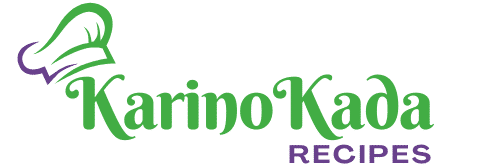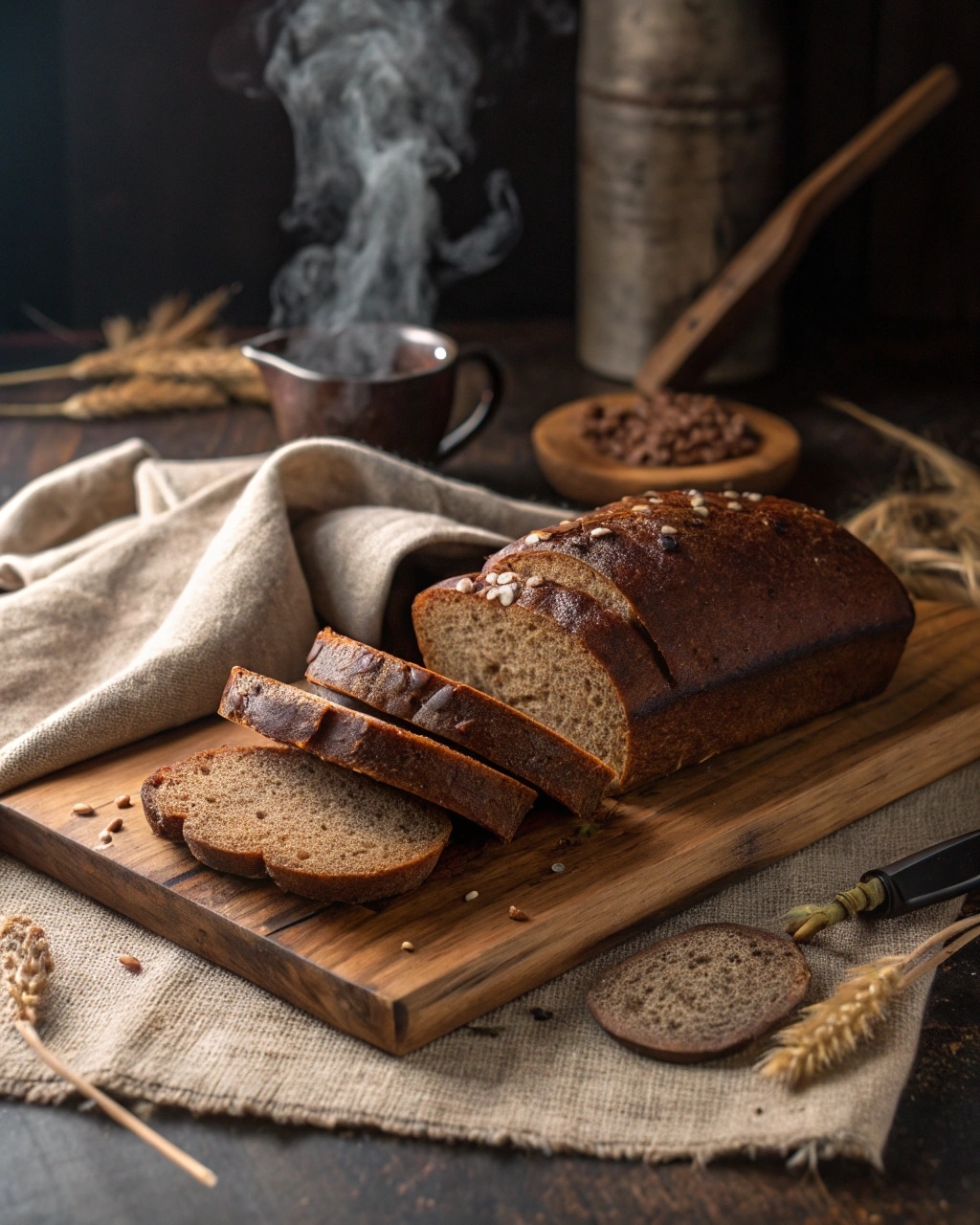Growing up in Kyoto, I remember watching my grandmother shape warm breads and sweet rolls with quiet focus and love. One of her favorite recipes was tucked inside the little wooden box I brought with me to California — a soft, dark bread sweetened with molasses and honey, flecked with rye flour, and kissed with cocoa powder. We didn’t call it squaw bread then, but when I first tasted it here in the U.S., the flavor pulled me instantly back to her kitchen, where time always felt slower and hearts warmer.
From my cozy kitchen in California, this squaw bread recipe now bridges two worlds — the earthy richness of Japanese comfort with the American love for homemade heartiness. It’s the kind of bread that turns breakfast toast into a moment of peace, and sandwiches into something unforgettable. And the best part? It’s surprisingly simple to make at home.
Whether you’re searching for an old-fashioned squaw bread recipe or just discovering it for the first time, this version is soft, lightly sweet, and deeply satisfying. Let’s gather our ingredients.
Ingredients for Squaw Bread

Pantry Staples with a Twist
Here’s what you’ll need to create this beautifully soft and flavorful squaw bread. The mix of whole wheat, rye flour, molasses, and cocoa powder gives it its signature depth and subtle sweetness.
| Ingredient | Amount |
|---|---|
| Warm water (110°F) | 1 ½ cups |
| Active dry yeast | 1 tablespoon |
| Brown sugar | 2 tablespoons |
| Unsulfured molasses | ¼ cup |
| Honey | 2 tablespoons |
| Vegetable oil | 2 tablespoons |
| Whole wheat flour | 2 cups |
| Rye flour | 1 cup |
| Bread flour (or AP flour) | 1 ½–2 cups |
| Unsweetened cocoa powder | 1 tablespoon |
| Salt | 1 ½ teaspoons |
| Cornmeal (for dusting) | 1–2 tablespoons (optional) |
Choosing the Right Flour and Sweetener
The flavor of squaw bread comes from the combination of rye flour and molasses. Rye adds a slightly tangy depth, while molasses lends moisture and iron-rich sweetness. If you don’t have rye flour, you can substitute with more whole wheat, but it won’t have the same traditional flavor.
Want to make it even more special? Try dusting your shaped loaves with cornmeal before baking — it adds a lovely rustic texture. For a dairy-free loaf, this recipe already qualifies, and you can even swap the honey for maple syrup to make it fully vegan.
How to Make Squaw Bread Step-by-Step
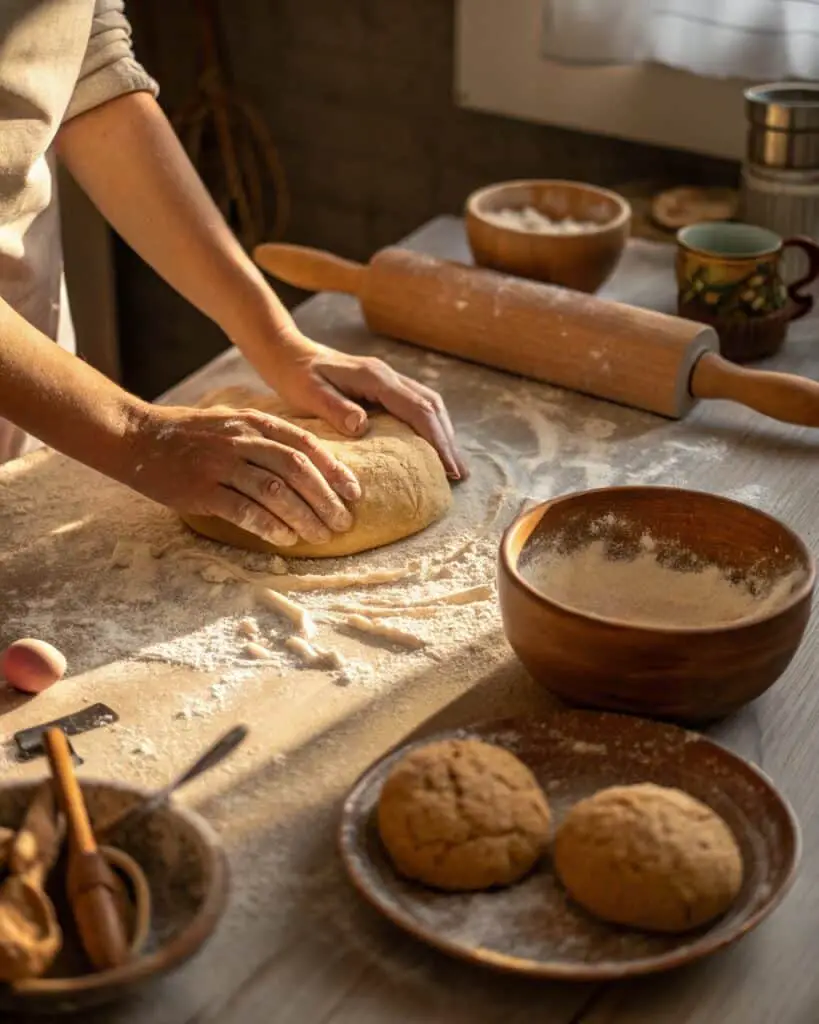
Mixing, Rising, and Shaping with Love
There’s something incredibly grounding about making bread by hand. As the dough comes together, it feels almost meditative — a slow rhythm of kneading, waiting, and shaping. Here’s how to make your homemade squaw bread tender, fragrant, and just the right amount of sweet.
Step-by-step Instructions:
- Activate the yeast: In a large mixing bowl, combine warm water, yeast, and brown sugar. Let sit for 5–10 minutes until foamy.
- Mix in the molasses, honey, and vegetable oil until they are completely blended.
- Add cocoa powder, rye flour, whole wheat flour, and salt, then mix until a sticky dough forms.
- Knead and strengthen: Gradually add bread flour, about ½ cup at a time, kneading for 8–10 minutes until smooth and elastic. Dough should be tacky, not wet.
- First rise: Place dough in a lightly oiled bowl, cover, and let rise in a warm place for about 1 hour or until doubled in size.
- Shape the loaves: Punch down the dough, divide in half, and shape into round or oval loaves. Put the dough on a baking sheet sprinkled with cornmeal.
- Let the loaves rise again, loosely covered, for 30 to 40 minutes until they look puffy.
- Bake: Preheat oven to 375°F (190°C). Bake for 30 to 35 minutes, or until the loaves are golden and sound hollow when tapped.
- Cool and slice: Let cool on a wire rack for at least 20 minutes before slicing.
Tips for a Perfect Bake
Use a kitchen scale: Accurate flour measurement improves consistency and prevents dense loaves.
Check for doneness: If you’re unsure, insert a thermometer into the center — it should read 190°F.
To make the crust soft, brush the loaves lightly with melted butter right after baking. It adds shine and softness.
If you enjoy hearty loaves like this, you might also love the homemade milk bread recipe for its pillowy texture, or the anko red bean swirl bread for a sweet twist.
For additional variations, sites like Greaty Recipes also offer creative ideas like molasses sandwich loaves — a similar inspiration rooted in home baking.
Serving Squaw Bread in Delicious Ways
Sweet, Savory, and Everything in Between
There’s a cozy charm in the smell of fresh squaw bread cooling on your kitchen counter. Once it’s cooled, the real joy begins — eating it! This soft, slightly sweet loaf is incredibly versatile. Its rich, earthy flavor comes from the molasses and rye flour, making it ideal for both sweet and savory pairings.
Classic Serving Ideas:
- I like to toast this bread and eat it with butter and jam in the morning. The slight sweetness of the bread pairs beautifully with tart berry jam or salted butter.
- Grilled sandwiches: Squaw bread’s tender crumb holds up perfectly for panini or grilled cheese. Try it with turkey, cheddar, and a swipe of Dijon.
- Pastries and French toast: Leftover slices make incredibly soft French toast — just dip in egg, milk, and a touch of cinnamon before frying.
- It pairs well with soups and stews due to its mild tang and sweet taste. It’s especially nice with a bowl of Japanese miso soup for a comforting mix of flavors.
Looking for something sweet? A simple spread of honey butter or nut butter turns this rustic bread into an afternoon treat. Or toast a slice and top it with sliced banana and a drizzle of maple syrup for an energizing breakfast.
Elevated Pairings:
Pair your squaw bread with a smoked salmon bowl for a Scandinavian-Japanese fusion, or enjoy it alongside a warm bowl of Japanese curry — both bring out the bread’s sweetness while adding umami depth.
For inspiration, check out similar ideas on Greaty Recipes where old-fashioned rye and molasses bread variations take center stage in sandwiches and hearty plates.
How to Store and Freeze for Later
Fresh squaw bread stays soft for up to 4–5 days if stored properly. Keep it in an airtight bag at room temperature — never in the fridge, as that dries it out faster. If you’ve made two loaves, consider freezing one for later.
Freezing Tips:
- Let the bread cool completely.
- Store by wrapping in plastic wrap followed by foil.
- Store in a freezer-safe bag for up to 3 months.
- To serve, thaw at room temperature or warm it in a 325°F oven for 10 minutes.
You can also pre-slice it before freezing for easy toast-ready mornings. Trust me — once you taste this bread warm with melting butter, you’ll wish you always had a loaf ready to go.
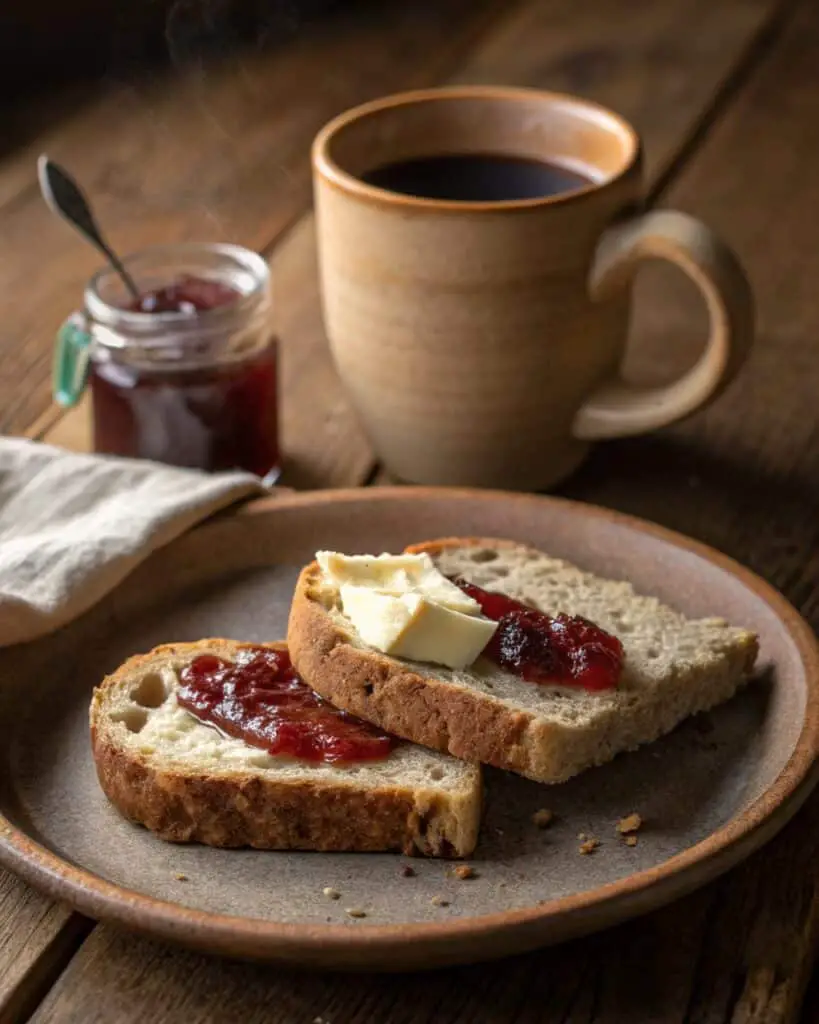
Nutrition in Squaw Bread
A Wholesome Slice of Comfort
Squaw bread isn’t just satisfying — it’s surprisingly nutrient-rich too. Its balance of rye, whole wheat, and molasses gives it a warm, earthy depth with benefits that go beyond flavor. Let’s look at what makes this bread both comforting and nourishing.
Approximate Nutrition Per Slice (1 of 16):
- Calories: 140
- Carbohydrates: 26g
- Fiber: 3g
- Sugar: 4g
- Protein: 4g
- Fat: 2g
- Iron: 6% DV
- Sodium: 160mg
The rye and whole wheat flours add dietary fiber that helps keep you full and supports healthy digestion. Molasses provides trace minerals, especially iron, calcium, and magnesium, while the low-fat profile makes it an excellent everyday bread.
This homemade squaw bread is more wholesome than many store-bought versions that often contain additives, high-fructose corn syrup, or excess salt. With just a touch of honey and cocoa, you get sweetness without overdoing it — making it a smart option for kids and adults alike.
How to Lighten or Enrich the Recipe
Whether you’re baking for health goals or personal preference, there are easy ways to adjust this squaw bread recipe without sacrificing flavor or texture.
To lighten it up:
- Replace 1 tablespoon of oil with applesauce.
- Use honey or maple syrup entirely instead of molasses for a milder taste.
- Add 2 tablespoons of flaxseed meal to increase fiber and omega-3 content.
To enrich it further:
- Use milk instead of water for a slightly richer loaf.
- Add chopped walnuts or sunflower seeds to boost protein.
- Use a touch of butter for extra softness and flavor.
For a gluten-free twist, you can use a blend of oat flour and buckwheat with a binding agent like psyllium husk, though it will change the loaf’s texture.
Looking for more wholesome options? The homemade kinako bread offers another fiber-rich loaf with toasty, nutty notes.
For broader variations with nutrition in mind, you can also explore Greaty Recipes for breads like multigrain honey loaves, which share similar characteristics with a nutrient-dense squaw loaf.
FAQ About Squaw Bread
1. What is Squaw Bread made of?
Squaw bread is typically made with a blend of whole wheat flour, rye flour, molasses, and cocoa powder. These ingredients give it its signature deep brown color and slightly sweet, earthy flavor. Some versions also include honey or cornmeal for added texture and richness.
2. Why is it called Squaw Bread?
The name “Squaw Bread” was used commercially in the U.S. for decades, though it’s now considered culturally insensitive due to the term “squaw.” Historically, the bread was inspired by Indigenous ingredients and dark rye-style loaves. Today, many people simply refer to it as molasses rye bread or dark whole wheat bread, honoring the recipe without using outdated terms.
3. Is Squaw Bread the same as rye?
Not exactly. Although squaw bread has rye flour, it is softer and a bit sweeter than regular rye bread.Classic rye loaves are more dense and tangy, whereas squaw bread blends rye with whole wheat and sweeteners like molasses and honey for a milder flavor.
4. Is Squaw Bread the same as brown bread?
They’re similar but not identical. Brown bread can refer to any bread made with whole grain flour, often with molasses. Squaw bread, however, has a specific combination of rye, cocoa powder, and molasses, which gives it its unique flavor and dark color.
Conclusion
This squaw bread recipe is more than just a homemade loaf — it’s a story, a memory, and a bite of something comforting and rooted. From the moment I kneaded the dough in my California kitchen, I was back in Kyoto, next to my grandmother, her hands working with quiet joy. This bread carries the warmth of tradition and the joy of simplicity — sweetened by molasses, shaped by love, and shared with family.
Whether you enjoy it toasted with butter or layered into a hearty sandwich, it’s a recipe that feels like home. Try it once, and you’ll find yourself making it again — not just for how it tastes, but for how it makes you feel.
Print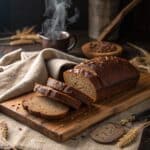
Squaw Bread Recipe – A Soft, Slightly Sweet Classic You’ll Love
- Total Time: 2 hours
- Yield: 2 loaves 1x
- Diet: Vegetarian
Description
Soft, dark, and slightly sweet squaw bread made with rye flour, molasses, and honey. A comforting loaf perfect for sandwiches or toast.
Ingredients
1 ½ cups warm water
1 tbsp active dry yeast
2 tbsp brown sugar
¼ cup molasses
2 tbsp honey
2 tbsp vegetable oil
2 cups whole wheat flour
1 cup rye flour
1 ½–2 cups bread flour
1 tbsp cocoa powder
1 ½ tsp salt
Cornmeal for dusting
Instructions
1. Activate yeast in warm water with brown sugar.
2. Stir in molasses, honey, and oil.
3. Add cocoa, rye, whole wheat, and salt.
4. Add bread flour gradually and knead until smooth.
5. Let rise until doubled, about 1 hour.
6. Punch down, shape into 2 loaves.
7. Place on baking sheet, rise 30–40 minutes.
8. Bake at 375°F for 30–35 minutes.
9. Cool before slicing.
Notes
To make vegan: replace honey with maple syrup.
Freezes well for up to 3 months.
Brush top with butter after baking for soft crust.
- Prep Time: 15 minutes
- Cook Time: 35 minutes
- Category: Bread
- Method: Baking
- Cuisine: American
Nutrition
- Serving Size: 1 slice
- Calories: 140
- Sugar: 4g
- Sodium: 160mg
- Fat: 2g
- Saturated Fat: 0g
- Unsaturated Fat: 2g
- Trans Fat: 0g
- Carbohydrates: 26g
- Fiber: 3g
- Protein: 4g
- Cholesterol: 0mg
